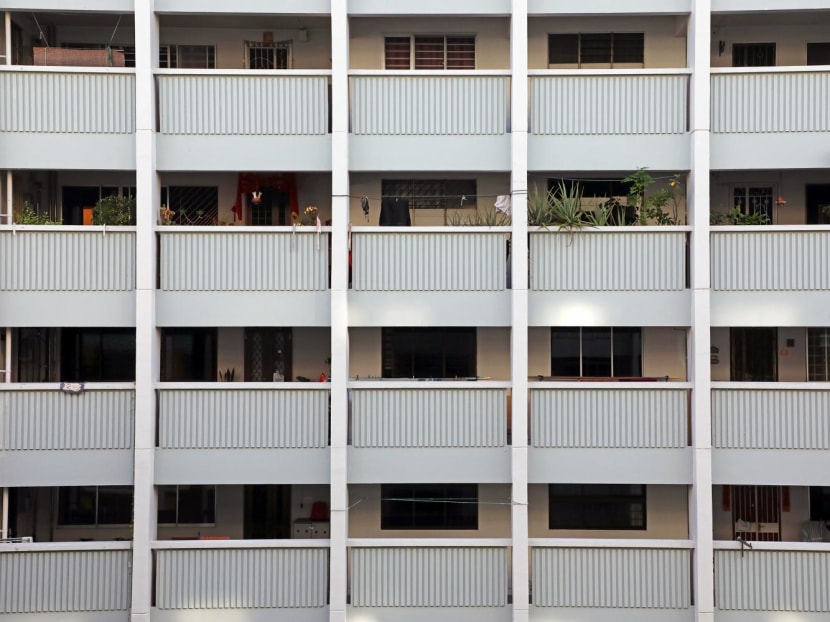Enforcement officers may be allowed to enter homes without consent to resolve neighbour disputes under proposed changes to framework
SINGAPORE — Enforcement officers may soon be allowed to enter homes to put a stop to ongoing nuisances, such as seizing items that are causing excessive noise, without the consent of the occupants or owners.

- Enforcement officers may be given enhanced powers to investigate serious neighbour disputes under proposed enhancements to the Community Dispute Management Framework
- This includes entering a home to remove an item causing excessive noise without the consent of the owner or resident
- The Ministry of Culture, Community and Youth has invited the public to give feedback on these enhancements from May 11 to 31
SINGAPORE — Enforcement officers may soon be allowed to enter homes to put a stop to ongoing nuisances, such as seizing items that are causing excessive noise, without the consent of the occupants or owners.
This is one of a number of proposed enhancements to the Community Dispute Management Framework that were announced by the Ministry of Culture, Community and Youth (MCCY) on Wednesday (May 10).
The framework was set up in 2014 with the aim of promoting a more gracious and harmonious living environment in both public and private estates, and encourages the use of mediation to settle disputes.
Members of the public may give feedback from Thursday until the end of the month on the proposed enhancements to the framework, which also includes allowing enforcement officers to install monitoring devices such as noise sensors in common areas to assist in investigating disputes.
WHY IT MATTERS
These days, the majority of community disputes involve neighbourhood noise, Mr Edwin Tong, Minister for Culture, Community and Youth, said in a written reply to parliamentary questions on Monday (May 8).
Mediation has proven to be an effective way to resolve such disputes, along with disputes due to other reasons.
More than 80 per cent of dispute cases that go through the Community Mediation Centre are successfully resolved, MCCY said.
However, it said on Wednesday (May 10) that mediation is now voluntary and less than 30 per cent of cases referred to the centre go on to the mediation stage because one or more parties refuse to participate.
To improve the take-up of mediation among disputing neighbours, the Government announced during the Budget debate in Parliament earlier in February that the enhancements to framework would include requiring disputing neighbours to undergo mandatory mediation, with penalties imposed on them if they failed to show up for that.
TODAY looks at some of the proposed enhancements to the framework.
ENFORCEMENT OFFICERS MAY BE GIVEN MORE POWERS
To enable more effective intervention to address serious cases where neighbours have competing claims, enforcement officers may be given more investigation and enforcement powers.
These include:
- Requiring the person who may be the feedback provider, or the alleged nuisance maker or their neighbours, to state his particulars and provide a statement
- Installing monitoring devices such as noise sensors in the common areas of residences or within homes, or both, to assist in investigations
- Entering a place of residence to stop an ongoing nuisance or seize a nuisance-causing object, with or without consent
- Applying to the Community Disputes Resolution Tribunals for an order requiring a nuisance maker to go for a psychiatric assessment or treatment, or both, if they believe the person has a mental health condition that is causing his unneighbourly behaviour
STRENGTHENING THE MEDIATION FRAMEWORK
- Mediation may be made mandatory for residents who have rejected voluntary mediation, or for voluntary mediation cases that were previously settled at the Community Mediation Centre but where settlement agreement terms were later breached
- Disputing neighbours would also be able to register their mediated settlement agreements with the tribunals, as an order. A breach of such an order can lead to consequences, including financial penalties
ENHANCING THE 'LAST RESORT' PROCESS
When all other avenues to resolve the dispute are exhausted and mediation has failed, cases are referred to the Community Disputes Resolution Tribunals.
For these disputes that are difficult to resolve, the proposed adjustments to the Community Disputes Resolution Tribunals' process aim to deliver faster and more effective relief to affected residents, said MCCY.
Proposed enhancements to this process include:
- Making it mandatory for people to try mediation first before they start the process with the tribunals
- Allowing a person who experiences nuisance from a rented property to serve a notice to the property's landlord to take steps to address the problem. If the tenant continues his nuisance behaviour, the neighbour may start a claim against the tenant with the tribunals, and also seek an order for the landlord to put up a compliance bond to ensure that the tenant complies
As for the feedback-gathering exercise from the public, which is accessible from May 11 at go.gov.sg/feedbackcdmf, MCCY will publish a summary of key feedback received alongside its response after the exercise is over.











